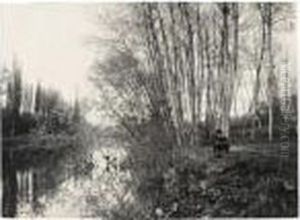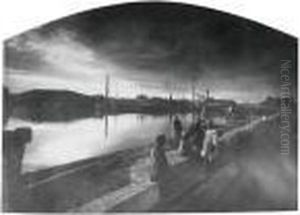Felix Thiollier Paintings
Felix Thiollier was an influential French photographer and art collector, born in 1842 in Saint-Étienne, France, and died in 1914. His work is significant for its contribution to the development of photography as an art form in the late 19th and early 20th centuries. Thiollier's interest in art and photography began at a young age, influenced by the industrial and cultural environment of Saint-Étienne, a major center for coal mining and manufacturing.
Thiollier was a self-taught photographer who excelled in capturing the natural landscapes, historical monuments, and everyday life of the Auvergne and Loire regions of France. His photographs are characterized by their attention to detail, composition, and a pioneering use of light and shadow, which set his work apart from that of his contemporaries. Thiollier was an early advocate of photography as a legitimate form of artistic expression, at a time when it was primarily viewed as a technical or documentary medium.
Beyond his work behind the camera, Felix Thiollier was deeply involved in the artistic community, collecting art and artifacts, and supporting fellow artists. He amassed an impressive collection of works, including pieces by the Impressionists, which he often shared with the public through exhibitions and loans to museums. His home became a meeting place for intellectuals, artists, and writers of the day, further cementing his role as a patron of the arts.
Despite his contributions to art and photography, Thiollier's work was relatively unknown outside of France until after his death. In recent years, however, there has been a resurgence of interest in his photographs, leading to several posthumous exhibitions and publications that celebrate his artistic legacy. Thiollier's photographs not only provide a valuable historical record of rural and industrial France in the late 19th century but also serve as a testament to his vision of photography as a form of artistic expression.

